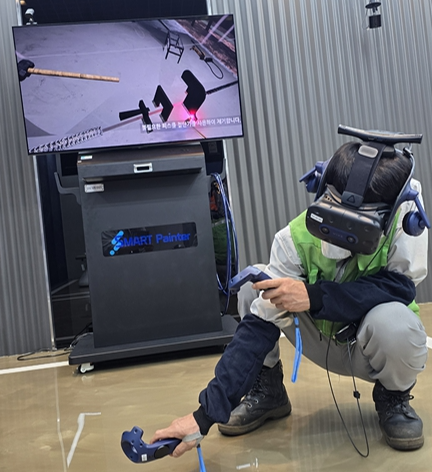
| Subject | Samsung Heavy develops welding virtual training program 'SVT FiT'… World's first | ||
|---|---|---|---|
| Reg. date | 2024-09-05 | Views | 1145 |

[Yonhap Infomax(https://news.einfomax.co.kr)/September 4, 2024] Samsung Heavy Industries announced on the 4th that it has developed the world's first virtual reality (VR) simulation 'SVT FiT' for welding technician training.
The work of attaching a hull is simple and involves welding the hull, but it is the basic work of shipbuilding.
Workers are at high risk of being exposed to dangers such as handling heavy objects, so they need intensive training to improve their skills and prevent safety accidents before being deployed to the field. However, the field is experiencing difficulties in training personnel due to limited training facilities and teaching materials.
The SVT FiT program, developed under the leadership of Samsung Heavy Industries Technical Training Center, allows fitters to practice using tools, welding, long-joining, and composite-part fittings without limitations in space and teaching materials. In addition, it has been developed in various languages, and is versatile enough to be applied to the introduction of foreign workers (E-7, E-9 visas).
Samsung Heavy Industries Technical Training Center is operating various national vocational training programs, including the National Human Resources Development Consortium Vocational Training, Industrial Transition Joint Training Center, K-High-Tech Platform, and Foreign Worker (E-9) Introduction Program, hosted by the Ministry of Employment and Labor and the Korea Human Resources Development Institute for Industry.
Samsung Heavy Industries expects that through the development of this SVT FiT, it will be able to increase the efficiency and effectiveness of training to systematically foster experts in related fields.
Cheon Myeong-jun, the director of the SVT Technology Training Center, said, “Through the SVT FiT training program, we have been able to systematically foster specialized personnel for assembly,” adding, “We expect that errors in the shipbuilding assembly process will be reduced, which will improve work efficiency. Furthermore, it will help resolve the shortage of manpower in the shipbuilding industry due to the increase in the number of eco-friendly ships being built.”
 HOME
HOME








